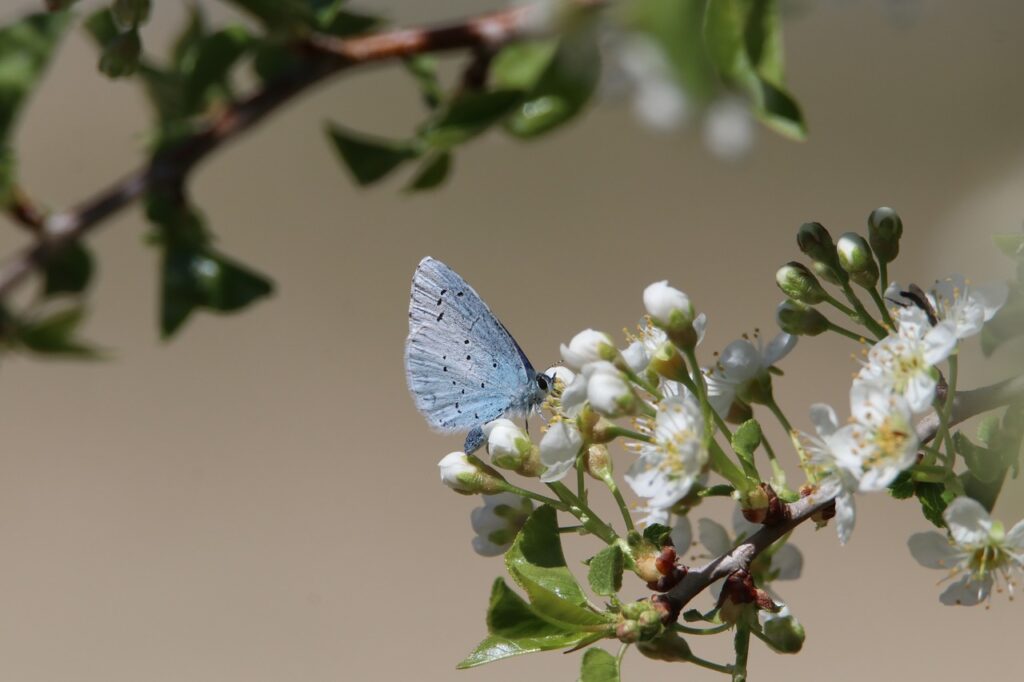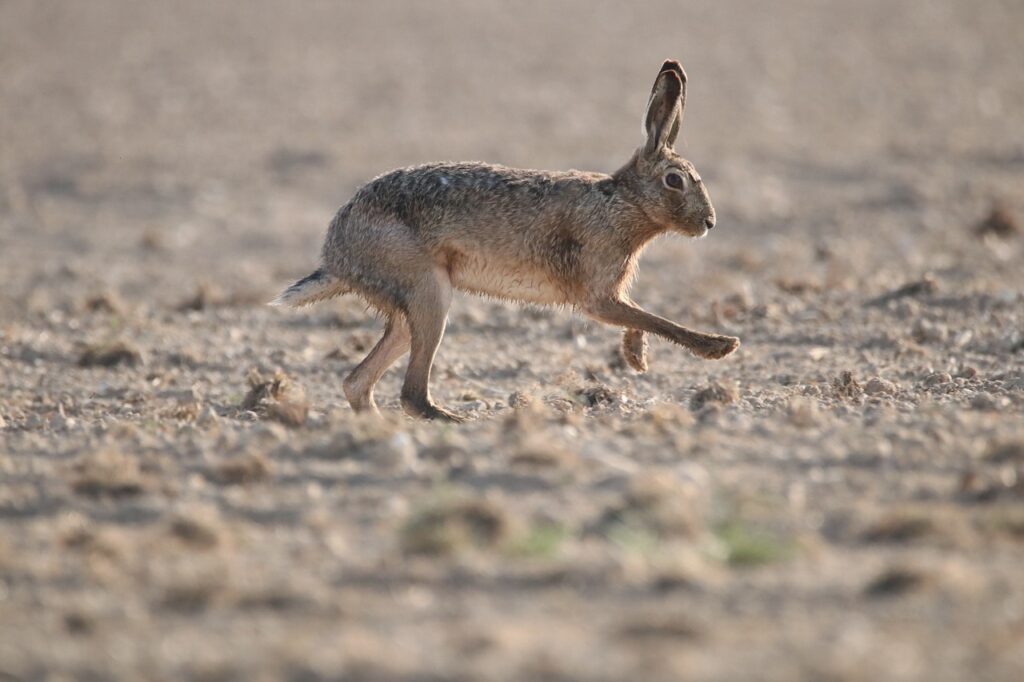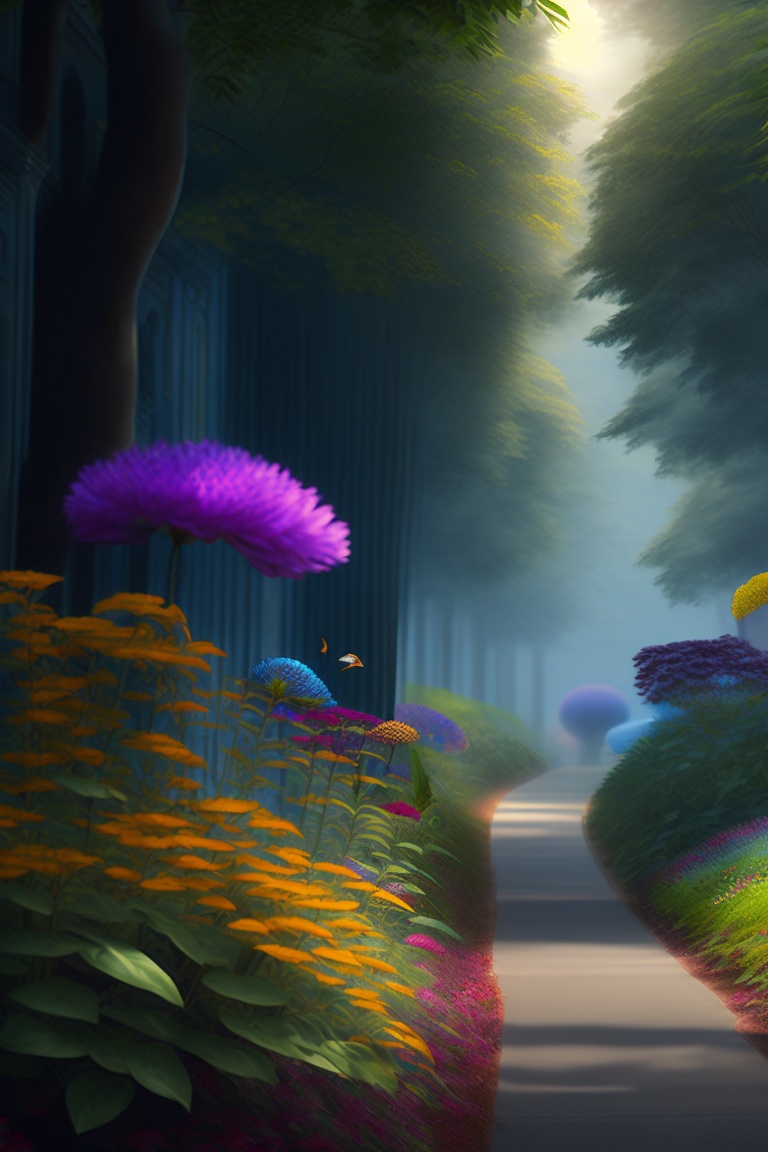Are you interested in protecting and restoring biodiversity in urban areas? With the rapid growth of cities, it is crucial to find ways to preserve nature within these highly populated spaces. This article explores different strategies and approaches on how can we protect and restore biodiversity in urban areas, ultimately creating healthier, more sustainable environments for both humans and wildlife to thrive in. Join us as we delve into the importance of biodiversity in urban settings and discover practical solutions that can make a difference.

Check Out Our Top Eco Friendly Product Picks On Amazon Here
Creating and Protecting Green Spaces
In urban areas, the importance of green spaces cannot be overstated. These areas provide numerous benefits, both for humans and for wildlife. They serve as havens of tranquility, offering a respite from the hustle and bustle of city life. Green spaces also play a crucial role in supporting biodiversity, providing habitats for a wide range of plant and animal species.
To effectively design green spaces that support biodiversity, it is important to consider several factors. First and foremost, native plants should be prioritized. Native plants are adapted to the local climate and soil conditions, making them more resilient and better able to support native wildlife. By incorporating a variety of native plants, we can create habitats that attract a diverse array of species.
In addition to native plants, incorporating features such as ponds, meadows, and trees can further enhance the biodiversity of green spaces. These features provide water sources, nesting sites, and food for various species. By creating a range of microhabitats within green spaces, we can support a greater diversity of wildlife.
One effective way to promote biodiversity in urban areas is through the establishment of urban forests. Urban forests not only provide valuable habitat for wildlife but also offer a host of other benefits. They help to improve air quality, reduce urban heat island effect, and provide shade and cooling. Moreover, urban forests can act as wildlife corridors, connecting isolated green spaces and allowing for the movement of species.
Another innovative approach to promoting biodiversity in urban areas is through the implementation of rooftop gardens. Rooftop gardens utilize previously unused space in cities and can provide habitat for plants, insects, and even birds. These gardens also help to mitigate the urban heat island effect, reduce stormwater runoff, and improve air quality. By encouraging the widespread adoption of rooftop gardens, we can make a significant impact on urban biodiversity conservation.
Promoting Native Plant and Wildlife Conservation
One of the most effective ways to support biodiversity in urban areas is by using native plants in our urban landscapes. Native plants provide food and habitat for native wildlife, and they are better adapted to local conditions. They require less water, fertilizer, and pesticides, making them more environmentally friendly. By incorporating native plants into urban gardens, parks, and green spaces, we can create valuable havens for local wildlife.
Creating wildlife-friendly habitats is another crucial aspect of promoting biodiversity in urban areas. This can be achieved by providing the necessary resources that wildlife needs to survive and thrive. Water sources, such as birdbaths or small ponds, are essential for many species. Nesting sites, such as bird boxes or insect hotels, can provide safe places for wildlife to breed and raise young. Adding diverse vegetation, such as trees, shrubs, and native flowers, ensures that wildlife has access to food and shelter.
Managing urban wildlife populations is another important consideration. While urban areas can support a variety of wildlife species, it is necessary to strike a balance to prevent conflicts with human activities. By implementing humane and ethical methods, such as contraception or relocation when necessary, we can mitigate conflicts and protect both wildlife and human interests.
Addressing invasive species is also crucial for the conservation of native plant and wildlife species. Invasive species can outcompete and displace native species, reducing biodiversity and altering ecosystems. It is important to develop strategies to prevent the introduction and spread of invasive species and implement effective control measures when necessary.
Implementing Sustainable Urban Planning
Integrating biodiversity into urban planning is vital to ensure the long-term conservation of urban ecosystems. By considering the ecological needs of plants and animals in the planning process, we can create urban landscapes that can support diverse wildlife populations.
Preserving and restoring urban wetlands is an essential component of sustainable urban planning. Wetlands provide critical habitat for numerous plant and animal species, including migratory birds. They also help to filter and purify water, contribute to flood control, and improve water quality. By protecting existing wetlands and restoring degraded ones, we can create valuable havens for biodiversity in urban areas.
Green infrastructure plays a significant role in promoting urban biodiversity. Green infrastructure refers to the use of natural systems, such as parks, green roofs, or permeable pavements, to manage stormwater, improve air quality, and enhance biodiversity. By incorporating green infrastructure into urban planning, we can create interconnected networks of green spaces that provide habitat and support wildlife movement across the urban landscape.
Implementing sustainable development practices is another crucial aspect of sustainable urban planning. This involves designing buildings and infrastructure that are energy-efficient, using renewable resources, and minimizing environmental impacts. Sustainable development practices contribute to reducing the ecological footprint of cities and ensuring the long-term sustainability of urban biodiversity.
Engaging the Community
Engaging the community is essential for the success of urban biodiversity conservation efforts. By creating awareness and education programs, we can foster a sense of appreciation and understanding among the general public. These programs can include workshops, seminars, and educational materials that highlight the importance of urban biodiversity and the actions individuals can take to support it.
Citizen science initiatives provide an opportunity for the public to actively participate in biodiversity monitoring and research. By involving community members in data collection and analysis, we can gather valuable information about urban wildlife populations and their habitats. Citizen science initiatives also help to foster a sense of ownership and empowerment among participants, reinforcing the importance of biodiversity conservation.
Involving the community in restoration efforts is another effective way to promote urban biodiversity. Community-led restoration projects, such as tree planting or habitat creation, not only improve urban ecosystems but also strengthen community bonds and foster a sense of ownership and stewardship. By actively involving the community in restoration efforts, we can create a sense of pride and responsibility in conserving urban biodiversity.
Collaborating with local organizations and volunteers is key to the success of urban biodiversity conservation initiatives. Local organizations, such as environmental nonprofits or neighborhood associations, often have a deep understanding of the local environment and can provide valuable expertise and resources. Volunteers, too, play a crucial role in implementing conservation projects, providing the necessary manpower to carry out restoration activities and monitor biodiversity.

Managing Pollution and Waste
Addressing air and water pollution is crucial for the health of urban ecosystems and the conservation of biodiversity. Urban areas often face challenges related to air pollution, caused by vehicle emissions, industrial activities, or the burning of fossil fuels. Implementing measures to reduce air pollution, such as promoting clean transportation options or imposing emissions standards, can help to protect both human health and biodiversity.
Water pollution is another significant concern in urban areas. Runoff from roads, buildings, and other impervious surfaces can carry pollutants into nearby water bodies, negatively impacting aquatic ecosystems. Implementing measures to manage stormwater runoff, such as green roofs, permeable pavements, or constructed wetlands, can help to filter and treat pollutants before they reach water bodies.
Reducing noise pollution is also important for urban biodiversity conservation. Excessive noise can disrupt wildlife behavior and communication, affecting their ability to find mates, reproduce, or forage for food. Implementing noise mitigation measures, such as planting noise-absorbing vegetation or creating sound barriers, can help to create quieter and more peaceful environments for wildlife.
Effective waste management strategies are crucial for urban biodiversity conservation. By reducing, reusing, and recycling waste, we can minimize the negative impacts of waste on the environment and wildlife. Additionally, implementing responsible disposal practices for hazardous materials, such as batteries or chemicals, helps to prevent pollution and protect biodiversity.
Conserving Urban Biodiversity
Conserving urban biodiversity involves protecting endangered and threatened species that inhabit urban areas. Urbanization poses significant threats to many species, leading to habitat loss, fragmentation, and reduced genetic diversity. By identifying and protecting important habitats for endangered and threatened species, we can help ensure their survival in urban environments.
Creating wildlife corridors is another important aspect of conserving urban biodiversity. Wildlife corridors are linear strips of habitat that connect isolated patches of habitat, allowing for the movement of species. By creating corridors that link green spaces, parks, and other natural areas, we can facilitate wildlife movement and genetic exchange, promoting biodiversity and ensuring the long-term viability of urban wildlife populations.
Preserving urban biodiversity hotspots is also crucial for conservation efforts. Urban areas can harbor unique and threatened species, often adapting to the urban environment. These biodiversity hotspots may include remnant natural areas, vacant lots, or even abandoned industrial sites that have become havens for biodiversity. By identifying and protecting these hotspots, we can safeguard species diversity and support urban ecosystems.
Maintaining genetic diversity is essential for the long-term viability of urban wildlife populations. Genetic diversity increases a population’s ability to adapt to changing environmental conditions and reduces the risk of inbreeding and genetic diseases. By conserving and connecting habitats, we can facilitate gene flow between populations, ensuring the maintenance of genetic diversity in urban species.

Creating Sustainable Urban Agriculture
Promoting sustainable urban agriculture practices is a crucial aspect of urban biodiversity conservation. Urban farming practices, such as rooftop gardens, community gardens, or vertical farming, not only provide access to fresh, locally grown food but also contribute to biodiversity conservation.
Rooftop gardens utilize previously unused space in cities and can provide habitat for plants, insects, and birds. These gardens can support a variety of crops and flowering plants, attracting pollinators and other beneficial insects. By incorporating rooftop gardens into urban landscapes, we can create additional green spaces that support biodiversity and contribute to local food production.
Community gardens provide an opportunity for community members to come together, grow their own food, and connect with nature. These gardens often incorporate a mix of edible plants, flowers, and native vegetation, creating valuable habitat for wildlife. By encouraging the establishment of community gardens, we can promote biodiversity conservation while fostering a sense of community and well-being.
Vertical farming is an innovative approach to urban agriculture that involves growing crops in vertically stacked layers. This method utilizes limited space efficiently while reducing the need for synthetic pesticides and fertilizers. Vertical farming can offer habitat opportunities for certain wildlife species, such as birds or insects, while providing a sustainable food source for urban communities.
Reducing reliance on intensive farming practices is crucial for urban biodiversity conservation. Intensive agriculture often involves the heavy use of synthetic pesticides and fertilizers, which can have detrimental effects on biodiversity. By promoting sustainable farming practices, such as organic farming or agroecology, we can reduce the negative impacts of agriculture on urban ecosystems and support biodiversity conservation.
Building Green Infrastructure
Green infrastructure plays a vital role in urban biodiversity conservation. Green roofs and walls are innovative ways to incorporate vegetation into the built environment. Green roofs utilize rooftops to create living ecosystems, providing habitat for plants and insects. They also help to reduce the urban heat island effect, improve air quality, and manage stormwater runoff.
Stormwater management using green infrastructure is another important aspect of urban biodiversity conservation. Traditional stormwater management systems often result in the rapid runoff of rainwater, carrying pollutants into water bodies. Green infrastructure, such as rain gardens or bioswales, helps to capture and filter stormwater, reducing pollution and recharging groundwater. These features also create valuable habitats for a variety of species, such as birds or amphibians.
Improving urban soil quality is crucial for supporting biodiversity in urban areas. Urban soils are often compacted, contaminated, or lacking in organic matter. By implementing soil improvement measures, such as adding compost or organic mulch, we can enhance soil fertility, structure, and water-holding capacity. Healthy soils provide a better environment for plants to thrive and support a greater diversity of soil-dwelling organisms.
Utilizing permeable pavement is another way to promote green infrastructure and support biodiversity in urban areas. Permeable pavement allows rainwater to infiltrate the ground, replenishing groundwater and reducing stormwater runoff. This helps to prevent flooding while filtering out pollutants. By incorporating permeable pavement into urban designs, we can create a more sustainable and wildlife-friendly built environment.

Collaborating with Businesses and Industries
Collaborating with businesses and industries is crucial for promoting biodiversity conservation in urban areas. By implementing sustainable practices, these entities can reduce their ecological footprint and contribute to the conservation of urban ecosystems.
Implementing sustainable practices in industries involves minimizing resource consumption, reducing waste generation, and adopting environmentally friendly technologies. This can include measures such as energy-efficient manufacturing processes, water recycling systems, or sourcing sustainable materials. By implementing these practices, industries can reduce their impact on biodiversity and contribute to a more sustainable urban environment.
Encouraging green business initiatives is another effective way to promote biodiversity conservation. Green businesses prioritize environmental sustainability in their operations, products, or services. By supporting these businesses, we can create a market demand for sustainable products and services, encouraging other businesses to adopt similar practices. This contributes to a more sustainable and biodiversity-friendly urban economy.
Supporting corporate social responsibility is another important aspect of collaborating with businesses. By encouraging businesses to invest in biodiversity conservation initiatives, we can leverage their resources and expertise for the benefit of urban ecosystems. Corporate social responsibility programs can include initiatives such as habitat restoration projects, employee volunteer programs, or financial support for conservation organizations.
Creating partnerships for biodiversity conservation involves collaborating with businesses, industries, and other stakeholders. By bringing together different entities, we can combine resources, expertise, and knowledge to achieve a common goal – the protection and conservation of urban biodiversity. These partnerships can involve joint projects, shared research initiatives, or coordinated conservation efforts, ensuring a coordinated and effective approach to biodiversity conservation in urban areas.
Monitoring and Research
Collecting data on urban biodiversity is essential for understanding the status, trends, and ecological processes that shape urban ecosystems. Monitoring efforts can involve the collection of information on species distribution, population sizes, and habitat quality. By collecting and analyzing these data, we can identify areas of concern and prioritize conservation efforts.
Assessing the impact of restoration efforts is another important aspect of monitoring and research. By evaluating the success of restoration projects, we can determine the effectiveness of different management strategies and adjust conservation practices accordingly. Monitoring allows us to track changes in biodiversity over time and provides valuable feedback for future conservation efforts.
Conducting research on urban ecology is crucial for expanding our knowledge and understanding of urban ecosystems. Research can provide insights into the ecological processes that occur in urban environments, provide guidance for conservation practices, and highlight the importance of urban biodiversity. By conducting research, we can uncover hidden pockets of biodiversity, explore the interactions between species, and better understand the challenges faced by urban wildlife.
Long-term monitoring and evaluation are essential to ensure the sustained success of urban biodiversity conservation efforts. By continuously monitoring biodiversity and evaluating the impact of conservation measures, we can adapt and refine our strategies over time. Long-term monitoring also allows us to detect trends, assess the effectiveness of different interventions, and track the recovery of urban ecosystems.
In conclusion, protecting and restoring biodiversity in urban areas requires a multifaceted approach. By creating and protecting green spaces, promoting native plant and wildlife conservation, implementing sustainable urban planning, engaging the community, managing pollution and waste, conserving urban biodiversity, creating sustainable urban agriculture, building green infrastructure, collaborating with businesses and industries, and conducting monitoring and research, we can make significant strides in protecting and restoring urban biodiversity. Through collective efforts and a commitment to sustainability, we can create cities that not only benefit humans but also provide thriving habitats for a rich diversity of plant and animal species.




